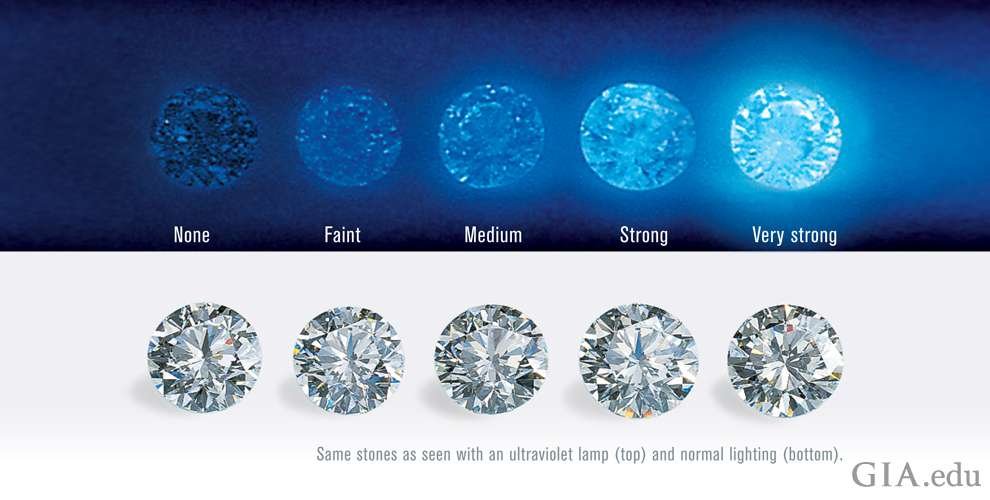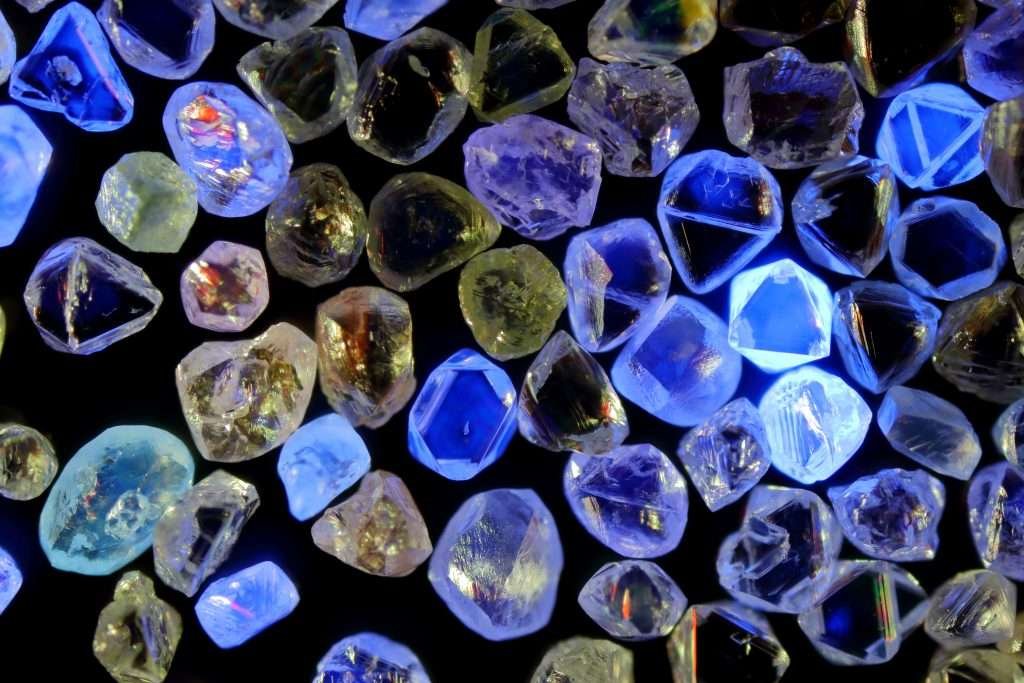Diamond fluorescence is a fascinating phenomenon that has a great impact on the world of diamonds. Understanding the nature of diamond fluorescence and its impact on a diamond’s appearance and value is essential for making informed decisions when selecting the perfect diamond. This article delves into the effects of diamond fluorescence and highlights its significance in relation to the other essential factors known as the 4 C’s (cut, color, clarity, and carat weight).
I. Diamond Fluorescence meaning
Diamond fluorescence refers to the soft, colorful glow emitted by some diamonds when exposed to ultraviolet (UV) light. This optical effect occurs due to trace elements, such as nitrogen, present in the diamond’s structure. These elements absorb UV light and subsequently emit visible light at a lower energy level, resulting in fluorescence.
II. Diamond Fluorescence good or bad
The impact of diamond fluorescence on a stone’s appearance and value varies based on its degree and color. Diamonds with blue fluorescence tend to exhibit a brighter and whiter appearance in natural daylight. This fluorescence can enhance the diamond’s overall brilliance and make it appear more visually appealing. On the other hand, diamonds with yellow fluorescence may appear slightly darker or exhibit a cloudy appearance under certain lighting conditions.
III. Evaluating diamond fluorescence
When assessing a diamond’s value, it’s crucial to consider fluorescence in conjunction with the other 4 C’s of diamonds. The degree and color of fluorescence should be evaluated alongside the diamond’s cut, color, clarity, and carat weight. Diamonds with no fluorescence or a faint fluorescence typically have a neutral effect on their appearance and may not significantly impact their value. However, diamonds with strong or very strong fluorescence may be viewed as less desirable by some buyers and may command a lower price.
IV. The Cosmetic Nature of Fluorescence
It’s important to note that diamond fluorescence is a cosmetic characteristic of a diamond and does not affect its structural integrity or hardness. Diamonds with fluorescence are just as durable and resilient as those without fluorescence. The primary consideration when evaluating fluorescence is its visual impact on the stone’s appearance and the buyer’s personal preferences.
V. Assessing Fluorescence Under Different Lighting Conditions
To fully assess the impact of diamond fluorescence, it is essential to view the diamond under various lighting conditions. This evaluation allows for a comprehensive understanding of how fluorescence influences the diamond’s appearance. Natural daylight, artificial lighting, and UV lighting can all contribute to the perception of fluorescence in a diamond.
Diamond fluorescence is a natural and intriguing phenomenon that can affect a diamond’s appearance and value. By understanding the effects of fluorescence and considering it alongside the other 4 C’s, buyers can make informed decisions when selecting a diamond. It is recommended to evaluate the degree and color of fluorescence and to view the diamond under different lighting conditions to accurately assess its overall beauty. Remember, the choice regarding fluorescence ultimately depends on personal preferences and the desired visual characteristics of the diamond.


